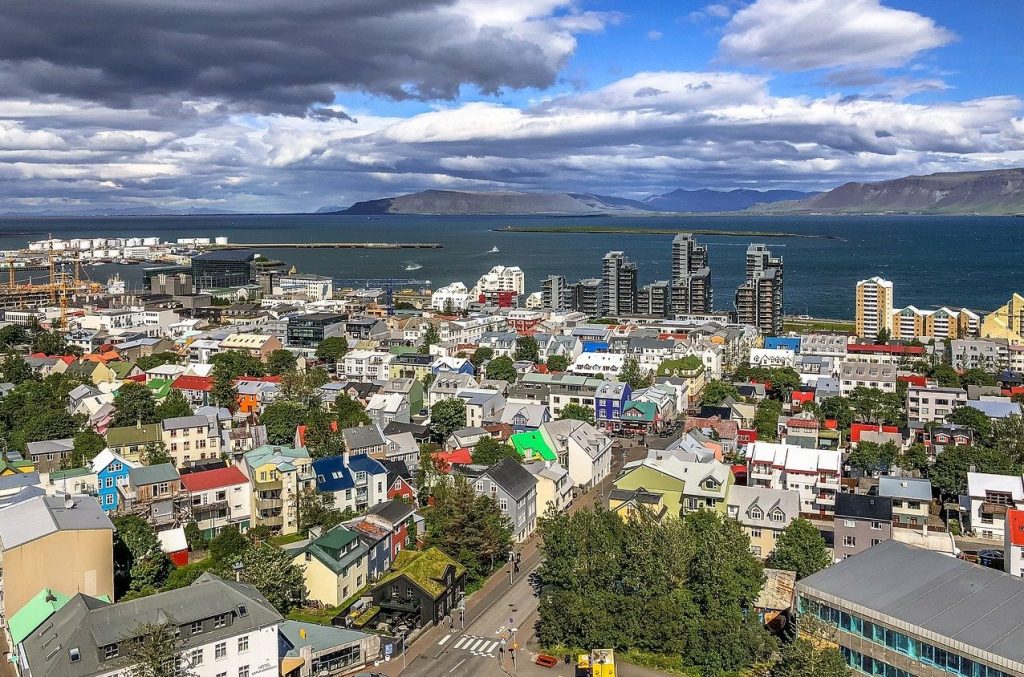Iceland’s 648 confirmed cases of coronavirus seem to indicate that our country now has one of the highest infection rates per capita in the world. But what do confirmed numbers really tell us about the spread of the virus?
Only a few weeks ago, planes filled with passengers returning to Iceland from ski resorts in Italy and Austria continued to land. These aircraft brought with them an influx of people infected with coronavirus. In a matter of days, it was clear that coronavirus had well and truly arrived in Reykjavik. But while the number of cases in Iceland is alarming, these figures are also testament to a rigorous testing program which is virtually unparalleled anywhere in the world.
For other countries, Iceland’s rising coronavirus tally should also come as a stark warning about just how widespread this illness really is. It demonstrates all too clearly that the reported spread of the virus elsewhere is not being accurately represented in the countries of origin.
In Iceland — a small country of 360,000 people with a strong healthcare system — coronavirus testing has been accompanied by population screening. Yet even with the hardline approach taken here involving early quarantining, self-isolation and infection tracing, infections have rapidly become widespread. There is no doubt that the virus’s spread has been just as far and wide in other European countries, where the number of tests is fewer and the follow-up, in many cases, much more lax.
So what can we learn from Iceland’s approach? The testing conducted by the National Health Service in Iceland along with further screening has already yielded some interesting results. Researchers at DeCode genetics have found 40 mutations of the coronavirus in Iceland alone; one individual had been infected by two variants at the same time. This is both good and bad news: the theory is that such mutations will make the virus more contagious but potentially less dangerous to those that are affected. Screening also indicates that children seem much less likely to catch the virus, but this may be influenced by the fact that children generally have mild symptoms.
When it comes to social distancing, Iceland has not yet taken on many of the draconian measures we now see in some other countries, although social distancing measures are gradually increasing. Some people in Iceland believe this should happen faster but there is not, for now at least, widespread criticism of the government’s handling of coronavirus. Only time will tell whether that is the correct view.
Of course, countries around the world are all experimenting with different approaches, with government predictions and reactions to unfolding events changing day by day. This is certainly true of the response in Britain, which has now finally gone into lockdown. We often hear that the reason for these sudden shifts is that governments are reacting quickly to unraveling events that are unpredictable and difficult to map out. But is that really the case? Could more have been done to prepare?
We have, after all, been aware of coronavirus for some months and witnessed its rapid spread through China and Asia. Italy was next. Then Spain. Just before Italy closed down some of its northern regions, and the entire country a day later, I — like so many others — started obsessively watching the numbers day by day and created graphs which immediately seemed to show where other countries were headed (even with only the confirmed cases). Soon it became apparent almost to the day what to expect in terms of the spread of this virus.
The US closed its borders to tourist travel from Europe and for 24 hours or so everyone seemed very surprised. Then one after another, European countries started closing their own borders. The EU‘s Ursula von der Leyen encouraged member states to keep borders open but by then no one was listening. Soon after the EU itself decided to close the Schengen area.
As for the spread of the virus and its consequences, Spain has remained at a worse trajectory than Italy for a couple of weeks. Today, there are even horrifying stories of elderly people being left to die in care homes as the virus continues to take hold.
So have European countries really learnt anything from the experience of other places where the virus has started to wane in its severity? Too few lessons have been taken, it would seem. Graphs showing the spread of the virus in South Korea compared to Western European countries paint a startling picture. While the spread leveled off early after a significant outbreak in South Korea, European countries have continued to experience exponential growth. Other Far East countries such as Japan, Taiwan, Singapore and indeed China have also appeared to have considerable success in limiting the spread of the virus.
The effects of closures in Europe are yet to be seen but given what we have seen so far and what that implies about future developments we should be doing more to learn from the methods that have proven most successful in Asia. That also, of course, still leaves the question of whether we will see a second wave of the virus. And for now, at least, in this fight against coronavirus, nothing is certain.
In the meantime, all countries should listen to the World Health Organization and follow the example of Iceland when it comes to the mantra ‘test, test, test’. But we also need to take all possible measures to limit the spread of the disease as the Asian countries have done successfully. For now, this approach seems to be the only answer in order to help Western health care systems deal with the problem. It also buys valuable time to build ventilators and other supplies, develop treatments and then, hopefully, find a vaccine.
This article was originally published onThe Spectator’s UK website.

























